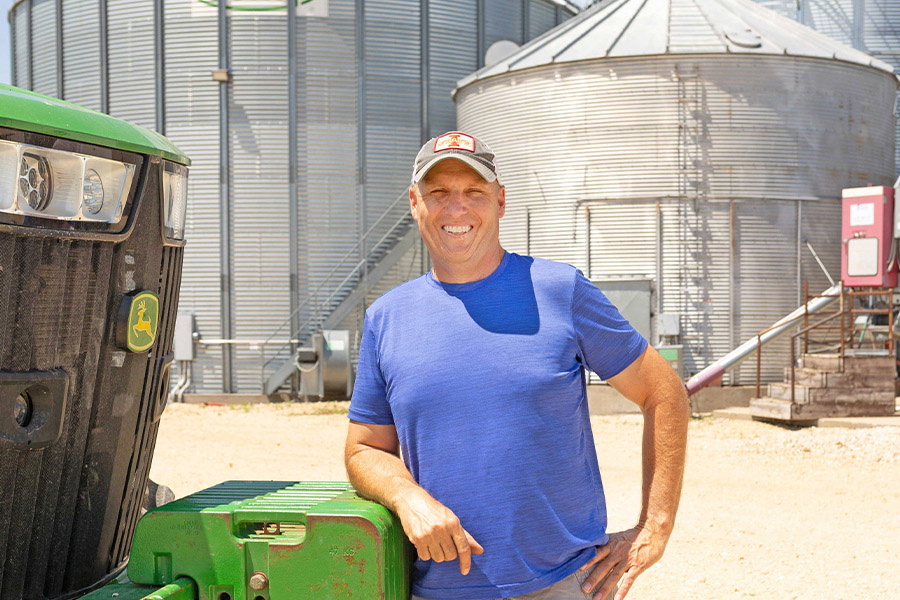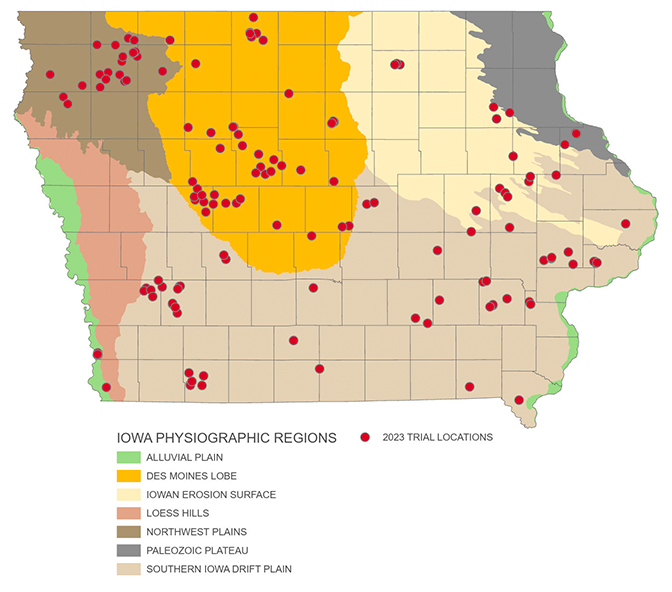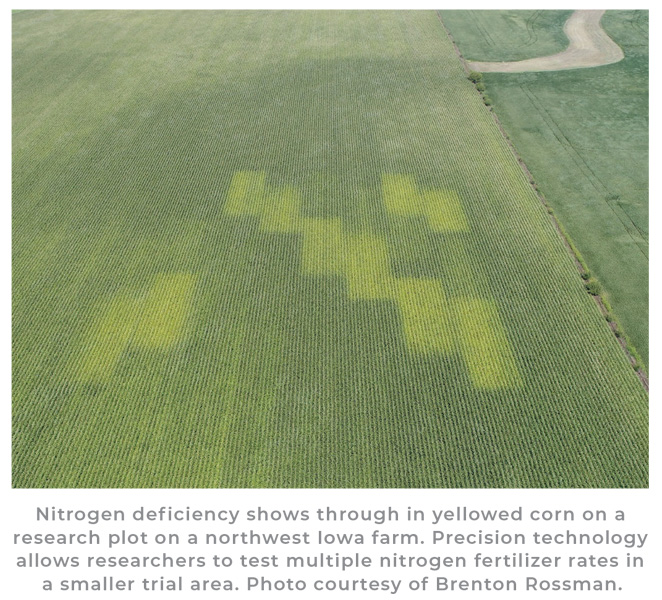
(Photo: Iowa Soybean Association / Joclyn Bushman)
Partnering for better nitrogen science
September 1, 2023 | Kriss Nelson
Nitrogen is critical in crop production but has become one of the most expensive fertilizers in recent years.
To help farmers understand their ideal nitrogen rates, Iowa Soybean Association (ISA) has teamed up with Iowa State University (ISU) to conduct field trials through the Iowa Nitrogen Initiative.
“One of the biggest questions Iowa farmers have is on nitrogen use,” says ISA’s Director of Research, Joe McClure. “They want to use the right amount for profitability, and also have environmental stewardship in mind.”

The Iowa Nitrogen Initiative, McClure notes, will help update tools available to farmers to make better educated nitrogen decisions.
“Applying the optimum nitrogen rate for growing Iowa crops has incredible benefits for profitability, productivity and environmental performance,” says Melissa Miller, Iowa Nitrogen Initiative project director.
The variability in the optimum nitrogen rate makes it difficult to predict.
“By working with Iowa growers to test nitrogen rates on hundreds of fields each year, we can develop decision support tools that arm farmers and their advisors with the information they need to get closer to that optimum rate,” she says.
The initiative’s trials should help researchers and farmers understand how nitrogen performs in soil types, environments, and cropping practices.
Those aspects of the trial are why ISA farmer-member Tom Vaske of Masonville in Delaware County is taking part in the initiative.
“I have been wanting to learn how different rates affect yield. Are we using too much? Or should we be putting more on? What are the effects of different soil types and water-holding capacities? I think little research has been done on this,” he says.
Farmer-friendly trials
This is the second year for the Iowa Nitrogen Initiative, with 100% of the farmers involved last year participating again this year.
“It’s a hassle-free trial for the farmer that adds much value,” says McClure.
Participation requirements include yield maps from previous years, a calibrated yield monitor and access to equipment that can apply nitrogen at variable rates across the field.
“Yield maps will help us understand where a trial should be placed in the field,” says McClure.
Two block trials are placed in a field, and, considering past yield maps, trials will be put in consistently higher and lower-yielding field areas. There will be five different nitrogen treatments within the block, all put on by a prescription that the principle investigators involved in the initiative prescribe.
Vaske, the participating farmer, had upgraded his liquid nitrogen applicator to include variable rate technology, qualifying him to participate in the trials.
“For the last five years, I have been trying to figure out how to apply my nitrogen using variable rates to help conserve my inputs,” he says. “Nitrogen is an expensive outlet; we don’t want to lose it.”
By participating in the Iowa Nitrogen Initiative, Vaske receives annual results, guiding his practices one year to the next.
“Farmers should learn something every year with annual data. They don’t have to wait the full four years for an analysis,” says McClure.
Working together for Iowa farmers
ISA will use its network of research and conservation agronomists to help recruit farmers.
“Our goal is to increase recruitment with the Iowa Soybean Association being the single point of contact for the farmer,” says McClure. “We will gather their information, partner with Iowa State University for the nitrogen prescription, and deliver the prescription and results back to the farmer.”
“The Iowa Soybean Association’s experience with on-farm research and trusted relationships they have with farmers makes them a great partner in finding participants, executing the trials, and delivering the research results back to growers,” says Miller.
Statewide farmer participation will ultimately benefit farmers, Vaske says.
“Make the commitment,” Vaske says. “The more acres we can enroll, the more research we will have on how nitrogen is affected by soil types, weather and more.”
Back